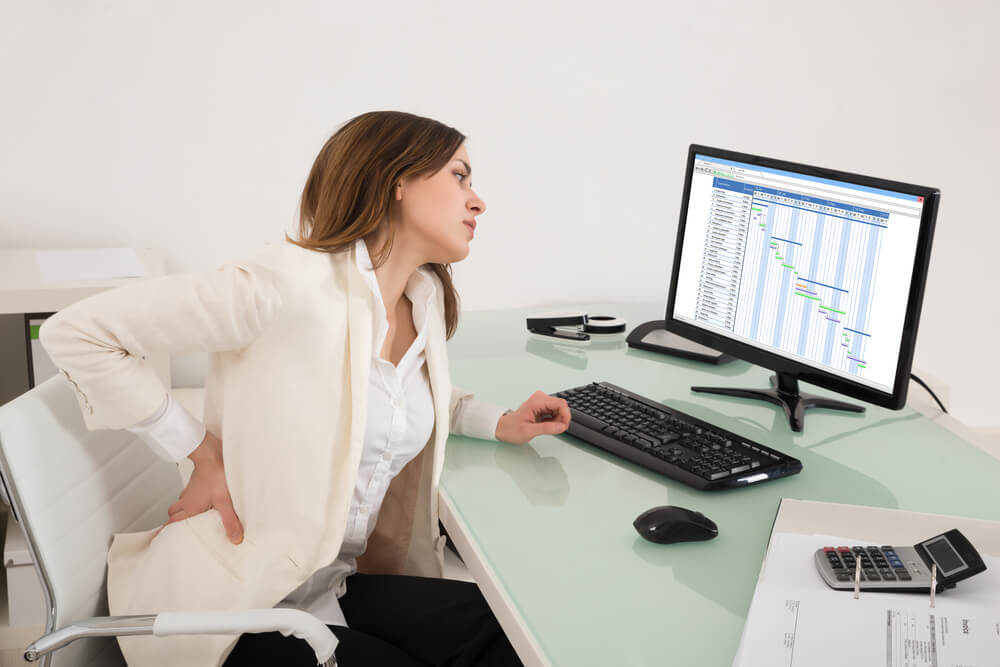The lower back is an important area of the body for several reasons. It helps to support the upper body when you’re standing or sitting, and the lower back also helps to move the trunk of your body in many ways. In a lot of cases, pain in this part of the back may come from sports injuries or lifting heavy objects with poor posture. However, there are two reasons that just sitting at your desk could lead to lower back pain.
- We lean forward from the lower back when sitting
Even though we know it’s bad posture, many of us unconsciously lean forward while we’re working at our desks. This is especially true when we’re focusing completely on an important document or task on the computer. This forward-leaning posture can easily cause lower back pain when sitting. The problem is the lower back muscles have to support the weight of your upper body, and leaning forward puts extra pressure on them. After spending hours in this position, your lower back muscles will be as tired and sore as if you’d spent hours working them out.
- The shoulders can roll forward when you sit
People with chairs that aren’t properly supportive are more likely to sit with their shoulders rolled forward. This posture is also more common if your keyboard is positioned too far from your body. Other people may have chest muscles that are stronger than their back muscles, and the shoulders-forward posture that all these issues cause places more stress on the lower back or lumbar region. As with leaning forward from your lower back, long periods of sitting with your shoulders forward can lead to lumbar muscle fatigue and pain.
Advent Physical Therapy can help you find ways to reduce lower back pain when sitting
Office workers who suffer from back pain can find help at Advent Physical Therapy. We have 14 clinics located across West Michigan, and each of these clinics has friendly and experienced therapy specialists who are ready to assist you. We offer free screenings that can help you learn the source of your lower back pain when sitting. We’ll use the information from your screening to build you a personalized treatment plan for your back, and your plan could include beneficial therapy techniques like:
- Manual therapy
- Cupping
- Ergonomic evaluation and recommendations
- Instrument assisted soft tissue mobilization (IASTM)
- McKenzie Method®
Are you ready to start getting our help with your lower back pain? Contact our team today for more information or to schedule an initial appointment.

